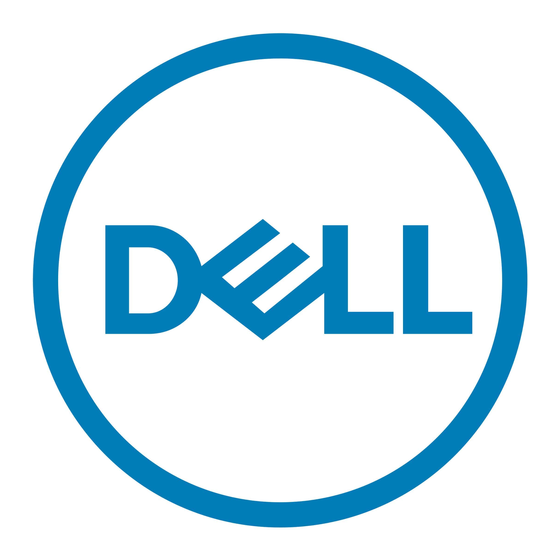Dell DX6000G User Manual - Page 18
Browse online or download pdf User Manual for Server Dell DX6000G. Dell DX6000G 48 pages. Rack installation instructions — static rails
Also for Dell DX6000G: Release Notes (7 pages), Setup And Configuration Manual (23 pages), Rack Installation (2 pages), Rack Installation (2 pages)

DX Cluster File Server Configuration
When you deploy a DX Cluster File Server (CFS), the CFS must have direct
access to the DX Storage Cluster on the private network and the public
network. Gigabit Ethernet or higher is the recommended connection speed
between the CFS server and the DX Storage Cluster Nodes.
The CFS contains six Ethernet ports. In a single server configuration, two
Ethernet ports must be configured to the Public network and four to the DX
Storage Cluster. In a failover configuration, it may be desirable to have a
separate network dedicated to iSCSI traffic. You can configure two Ethernet
ports to the Public Network, two to the iSCSI network, and two to the DX
Storage Cluster. Depending on site requirements, these ports can be
configured for link aggregation protocol (LACP) operating in mode 4, or
adaptive load balancing (ALB) operating in mode 6. Many sites prefer ALB as
it does not require switch configuration. You may use any configuration that
is commonly used in your environment.
A common NTP time source is required for all CFS servers and the DX
Storage Cluster to provide clock synchronization. If you use Active Directory,
the NTP time source must be the same as the domain controller that is used
for handling Active Directory based credentials.
Application Access to DX Object Storage
Platform
Communicating Directly With a Local Cluster
Applications can communicate with a DX Storage Node at any time. The DX
Object Storage software automatically redirects applications to the proper
node even if the addressed node is an incorrect node to handle a request. If
both Cluster Services Node and cluster nodes are not responding, you can
communicate with the remote cluster by addressing the remote Cluster
Storage Nodes or remote Cluster Services Node directly. For many
configurations, it is recommended to create a single name through DNS
which maps to the DX Storage Nodes. A single name allows communication
with the DX Storage Nodes using one domain name. DNS automatically
rotates addressing through the storage nodes. For more information, see the
DX Object Storage Application Guide at support.dell.com/manuals.
18
DX Object Storage Platform Overview
